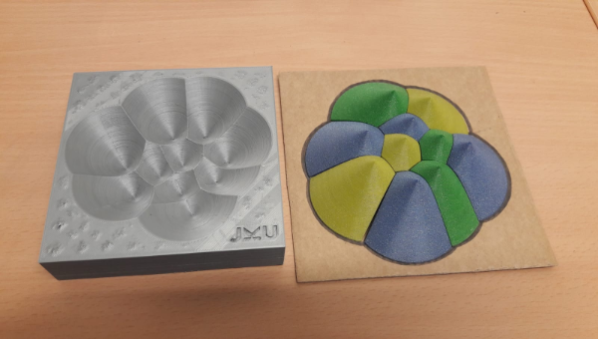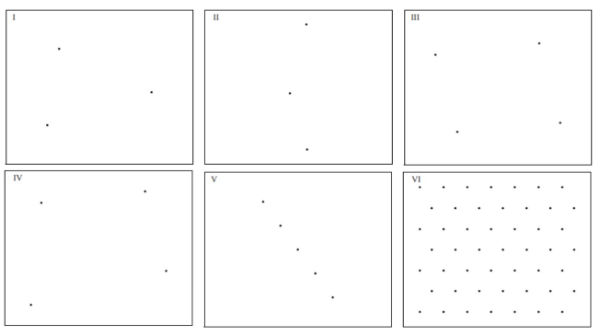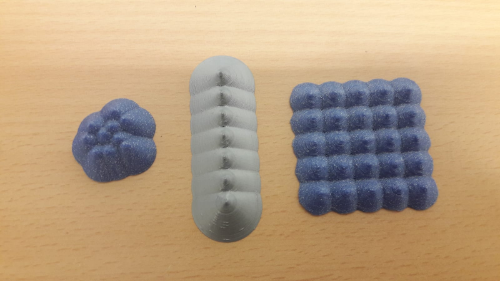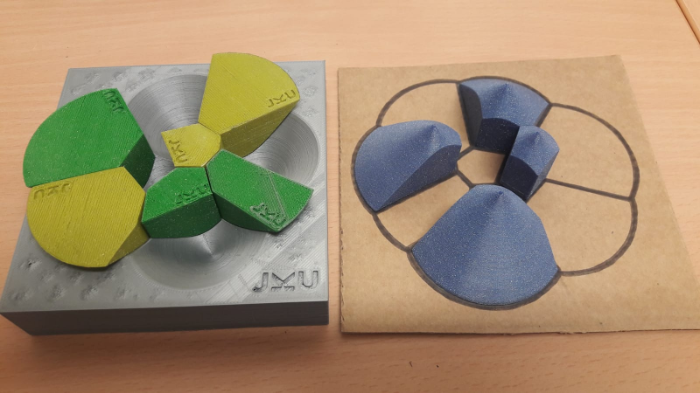Voronoi - Lesson Plan

Voronoi - Lesson Plan
- Topic: Voronoi
- Grade, subject: 6th grade or older, mathematics
- Duration: 1 - 2 units (à 50 min)
- Material for students: exercise books, sheet of paper with sets of points, pencil, ruler, ...
- Additional materials: 3D-printed materials
Prior knowledge of the students
The students already know/learned...
- ...how to use a GeoGebra Application
- ...what a perpendicular bisector is and how it is constructed.
- ...how use the command "Voronoi(<List of Points>)" in GeoGebra
Gained competencies and skills by the activity or lesson
Which competencies could students learn by the activity or lesson?
The students...
- ...train constructing perpendicular bisectors maually and by using GeoGebra.
- ...know characteristics of perpendicular bisectors and additionally of voronoi-diagrams.
- ...learn about the applications of voronoi-diagrams in the real world.
- ...gain another perspective on mathematic concepts by using 3D printed materials.
- ...train to present/defend their ideas in front of a group.
- ...train to find an agreement with a few other students.
Lesson Plan - Overview
The steps in more detail follow below.
- Introduction
- activating pre-knowledge
- Example 1: post office
- Example 2: post office
- Theoretical input
- Finding examples
- Switch from 2D to 3D
- PUZZLES: 2D and 3D
- Follow up information
Introduction
- teaching method: direct instruction
- duration: ~3 min
activating pre-knowledge
Start a dialog between you and the students and find out if the students still have some knowledge about perpendicular bisectors.
- if YES: Emphasis that every dot on the perpendicular bisector has the same distance to the two dots it belongs to.
- if NO: Explain how it is constructed and do exersices.
Example 1: post office
Where do I get my mail from?
Students get a picture of a map with 3 dots and should answer questions:
- Consider that you are living in _____. Which post office is the nearest to you?
- Consider that you are working in the post office ____. Find at least two addresses which you are delivering to.
- Are there addresses which have the same seperation to more offices? Can you find a specific address?
- Try to find areas around every post office, where each office is responsible to deliever the mail to.
Example 2: post office (OR as differentation to example 1)
Similar task as in example 1, just with more dots (e.g. 5).
(You can decide appropriately to you students if it is necessary to do one more similar example.)
Theoretical input
- teaching method: direct instruction
- duration:

Finding examples
- teaching method: individual work & plenary
- duration:
Switch from 2D to 3D
- teaching method: plenary
- duration:
For representing the switch to 3D, the students should play with the GeoGebra Applet in capter 5.1.
- method: think-pair-share
- duration:

Puzzles: 2D & 3D
- teaching method: group work
- duration:

Follow up information
In following lessons the students could form groups of 4 people and try out some of the game variations with voronoi-cones.